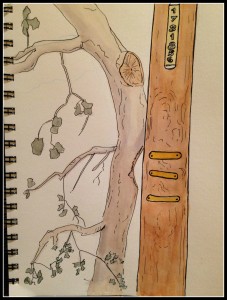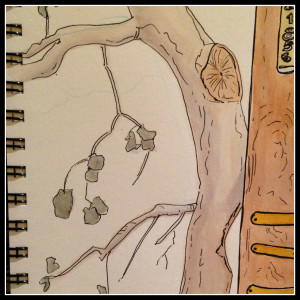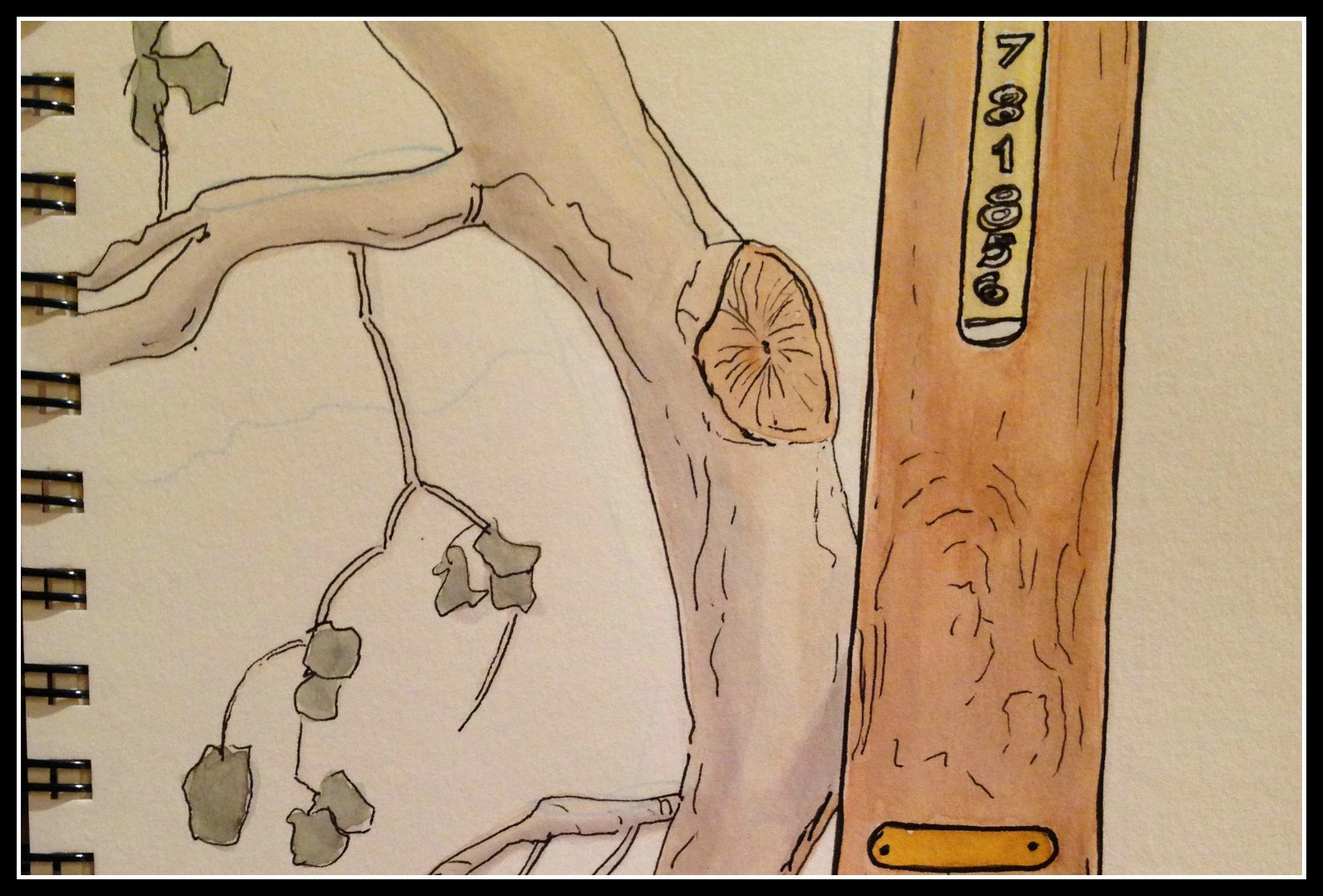So, recently a big flatbed pulled up to our driveway to deliver a new resident to our neighborhood: Electric Pole 1781856 . This pole was replacing an old pole whose name I didn’t catch before they took it away.
 A problem quickly arose. Seems a young Coast Live Oak was coexisting with the old pole nicely. But the workers needed to place the new pole above the location of the old pole. The new pole was to go right next to the young Coast Live Oak.
A problem quickly arose. Seems a young Coast Live Oak was coexisting with the old pole nicely. But the workers needed to place the new pole above the location of the old pole. The new pole was to go right next to the young Coast Live Oak.
The workers had to trim pieces off the Coast Live Oak to make the pole fit. The crew couldn’t cut down the young tree because Coast Live Oaks are protected here in California.
 Do you sometimes wish you didn’t ask a question because what you find out makes you a bit sick to your stomach?
Do you sometimes wish you didn’t ask a question because what you find out makes you a bit sick to your stomach?
After I finished this view of the Coast Live Oak’s new dent, I asked myself, “I wonder what it looks like from the back?” (See sketch at the end of this post.)
Being up close to the electric pole got me asking a second question- that has an equally unsettling answer-
“I wonder how these poles are made?”
Read here for complete details on the life of an electric pole.
The part of the process that makes me a bit sick to my stomach is that the different preservatives used on poles to keep birds and insects off are toxic.
Chromated Copper Arsenate (CCA), one of the types of preservatives, contains copper and arsenic. It is now banned in Europe. Here in the United States use of CCA is restricted to utility poles.
One thing to keep in mind if you have a utility pole around is that the toxic preservatives on the pole can leach from the pole with rainwater into the ground. Most of that leaching happens in the first year and is usually contained to within a foot diameter of the pole.
Lesson: Don’t let your children hug your utility pole. And, go here to learn how to care for your Coast Live Oak.
“But a sober look at our world shows that the degree of human intervention, often in the service of business interests and consumerism, is actually making our earth less rich and beautiful…”
Laudato Si ( paragraph 34)
Artist’s Note: For the watercolor sketches, I drew the basic outline of the tree and pole with a Uniball pen (Fine). Then I applied an ink wash for the shadows. After that was dry, I added the watercolor. I then drew in details with a Uniball pen (Micro). The bottom sketch was done with Uniball pens.

